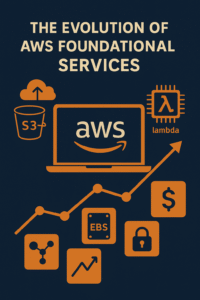In recent events, the cybersecurity landscape faced a significant challenge with the CrowdStrike-induced outage. This incident serves as a crucial reminder of the complexities and potential pitfalls of modern cybersecurity solutions. For tech professionals, understanding the nuances of this event is essential for safeguarding against future risks. In this guide, we will delve into the details of the CrowdStrike outage, explore its causes and impacts, and provide actionable insights to enhance your cybersecurity measures.
What Happened in the CrowdStrike Outage?
CrowdStrike had what they like to call a “distributed outage.” Translation: they managed to make a huge mess all by themselves. Lucky I dodged the bullet, but anyone with CrowdStrike on their Windows machines got a front-row seat to the Blue Screen of Death marathon. Technically, it was primarily due to a flawed update pushed by CrowdStrike. This update caused systems running Windows to encounter continuous blue screen errors, rendering them unusable. The core issue stemmed from a data file used by CrowdStrike’s kernel-level application, which inadvertently accessed restricted memory areas, resulting in system crashes. The core issue stemmed from a data file used by CrowdStrike’s kernel-level application, which inadvertently accessed restricted memory areas, resulting in system crashes.
Understanding Kernel-Level Security Risks
Kernel-Level Operations: CrowdStrike operates at the kernel level, providing deep system security by monitoring and acting on potential threats before they can compromise the system. However, this level of access also means that any errors can have catastrophic effects, such as system crashes or boot loops.Null Pointer Issues: The incident highlighted the problem of null pointer dereferencing, where the system attempted to access a memory location that wasn’t properly initialized. This issue underscores the importance of robust error handling and validation in security software.
Lessons Learned from the CrowdStrike Incident
The CrowdStrike outage offers valuable lessons for organizations relying on cybersecurity solutions:
Importance of Error Handling: Ensuring that software is equipped with adequate error trapping mechanisms is crucial. The CrowdStrike update failed to anticipate and handle malformed data, leading to widespread disruptions.Continuous Integration and Continuous Deployment (CI/CD) Best Practices: The lack of a robust CI/CD pipeline contributed to the failure. An effective pipeline could have detected the problematic update before it was deployed, preventing the issue from reaching end-users.
Best Practices for Cybersecurity
To mitigate similar risks in the future, organizations should adopt the following cybersecurity best practices:
- Comprehensive Testing: Before deploying updates, conduct extensive testing across all supported environments. This includes simulating real-world scenarios to identify potential issues.
- Incremental Rollouts: Adopt incremental update rollouts to minimize the impact of faulty updates. This approach allows organizations to identify and rectify issues before they affect the entire user base.
Diversify Security Solutions
- Avoid Monocultures: Relying on a single cybersecurity solution creates a single point of failure. Consider diversifying your security tools to reduce risk.
- Endpoint Diversity: Ensure that endpoints, such as servers and workstations, are not all running on the same platform. This diversification can prevent widespread outages from affecting your entire network.
Enhance System Resilience
- Backup and Recovery Plans: Implement robust backup and recovery strategies to ensure data integrity and system availability during outages.
- Regular Audits: Conduct regular audits of your cybersecurity infrastructure to identify vulnerabilities and areas for improvement.
The Role of Cybersecurity Vendors
Cybersecurity vendors like CrowdStrike play a pivotal role in protecting digital assets. However, incidents like this underscore the need for continuous improvement in their processes. Vendors should prioritize:
- Transparency: Maintain open communication with clients regarding potential risks and issues.
- Proactive Support: Provide timely support and solutions in the event of an outage or security breach.
In the Meantime
The CrowdStrike outage serves as a critical reminder of the complexities inherent in cybersecurity. By learning from this incident and implementing best practices, organizations can better protect their systems and data from future threats. As the cybersecurity landscape continues to evolve, staying informed and proactive is essential for maintaining robust defenses.



